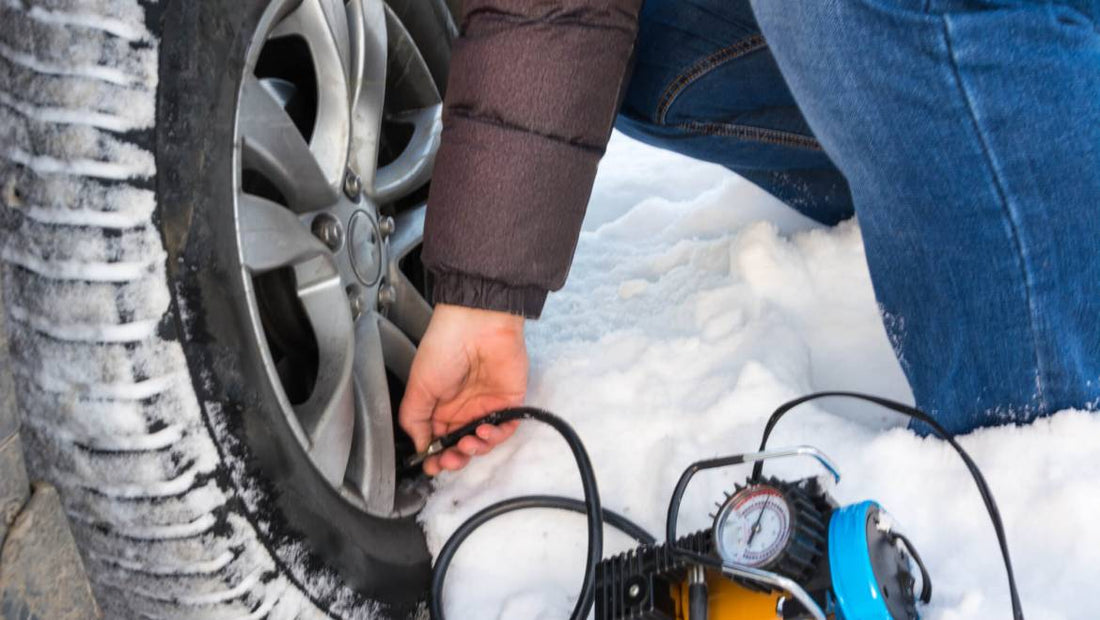All motorists know: it is necessary to check the tire pressure of your car often. But do you know the risks associated with under- or over-inflating your tires?
We tell you everything you need to know about tire pressure .
WHY SHOULD YOU CHECK YOUR TIRE PRESSURE?
To put it simply, know that poorly inflated tires lead to reduced driving comfort and an increased risk of accident . In fact, poorly inflated tires can be the cause of a loss of grip on the road and less efficient braking . Especially on wet or icy roads.
But that's not the only reason to regularly check the condition of your tires. Based on tests, poorly inflated tires can increase fuel consumption . Which, given the price of gasoline at the moment, is an important criterion to take into account.
In addition, poor inflation can cause your tires to wear out more quickly and, in certain situations, to burst .
Please note: this concerns both under-inflation and over-inflation . In the first case, the wear will occur on the outside of the wheel while in the second, the wear will occur on the inside.
That being said, and to summarize, not inflating your tires to the correct pressure is a risk both for you and for other road users . In addition, this will have a direct impact on your wallet (in terms of gas consumption firstly, but also in changing tires if you wait too long).
HOW TO CHECK YOUR TIRE PRESSURE?
To check your tire pressure, you must refer to the vehicle's user manual. Generally, you will find a small label stuck to the fuel filler flap or the driver's door edge.
This small element tells you precisely the pressure of your tires by taking into account different loading situations (low loading or large bulk). Presented in bar units (two digits), it is interesting to note that the pressure is different between the front and rear tires.
Now that you know this, you can easily check your tire pressure. As such, new vehicles have a function allowing you to monitor this data called TPMS for Tire Pressure Monitoring System . If this is the case, simply refer to it to find out the condition of your tires. Otherwise, you will need to check your tire pressure at least once a month and/or before a long journey of several hundred kilometers (a weekend or vacation departure, for example).
By referring to the user manual, you will know whether it is necessary to re-inflate your tires or not.
HOW TO BE SURE THAT YOU INFLATE YOUR TIRES TO THE RIGHT PRESSURE?
First of all, know that you must check the pressure of your tires when cold (the vehicle must have been driven less than 2 km). Indeed, when hot, tire pressure increases slightly. So, although it is advisable to inflate your tires cold (we emphasize this point), if you have to inflate your tires hot, add 0.3 bars to the value indicated by the manufacturer to bridge the pressure difference between a cold and hot tire. This will avoid any risk of under-inflation once the tire has cooled.
Also note: tire pressure in winter can also differ from pressure in summer. Indeed, experts believe that it is preferable to add 0.2 bar compared to what is indicated by the manufacturer when inflating a tire in winter. or even +0.3 bar if you are preparing to drive several hours.
In all cases, the pressure must be the same for each axle (front and rear).
When it comes to inflating your tires, you have two choices: you can do it in a center with a machine designed for this purpose (generally a service station) or you can buy an inflator equipped with a pressure gauge . Be careful, however: the use of this type of equipment has become chargeable in most stations.
Find the valve on each tire and unscrew it. Then insert the inflator tip and check the condition of your tires. If they are underinflated, add a little air until you get the right pressure. Do the same for each tire. And don't forget to check your spare tire.
Are you planning to ride in winter and go to the mountains? Don't forget that the Mountain 2 law came into force on November 1, 2021. It is therefore necessary to equip yourself with special equipment such as the Musher snow sock . Contact us for more information.
